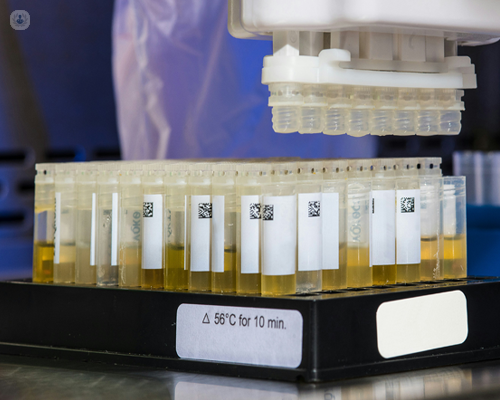Paracetamol
What is analysed?
Paracetamol analysis measures the concentration of paracetamol in the blood or urine. It helps assess paracetamol toxicity or monitor therapeutic levels in patients receiving treatment.

What does the result mean?
The result indicates the amount of paracetamol present in the sample. It helps determine if the levels are within the therapeutic range or if there's a risk of overdose or toxicity.
Why undergo the analysis?
Paracetamol analysis is crucial in cases of suspected overdose, poisoning, or when monitoring therapy to ensure safe and effective use of the medication.
When to undergo the analysis?
Paracetamol analysis is typically performed in cases of suspected overdose, poisoning, or to monitor therapeutic levels during treatment.
What sample is required?
Blood or urine samples may be required for paracetamol analysis.
Is any prior preparation necessary?
No specific preparation is usually necessary for paracetamol testing. However, patients should inform healthcare providers about any medications they are taking.
How is it used?
Paracetamol levels are measured using laboratory techniques such as chromatography or immunoassays.
What are the normal values?
Normal paracetamol levels in blood typically range from 10 to 30 micrograms per milliliter (mcg/mL). In urine, normal levels vary but are typically less than 10 mcg/mL.
Paracetamol values interpretation
| Sample | Normal paracetamol levels (mcg/mL) |
| Blood | 10 - 30 |
| Urine | < 10 |
This table provides the normal ranges for paracetamol levels in blood and urine, aiding in the interpretation of paracetamol analysis results.
What do altered values signify?
Elevated paracetamol levels may indicate overdose, poisoning, or liver damage. Lower-than-normal levels may suggest incomplete absorption or metabolism of the drug.